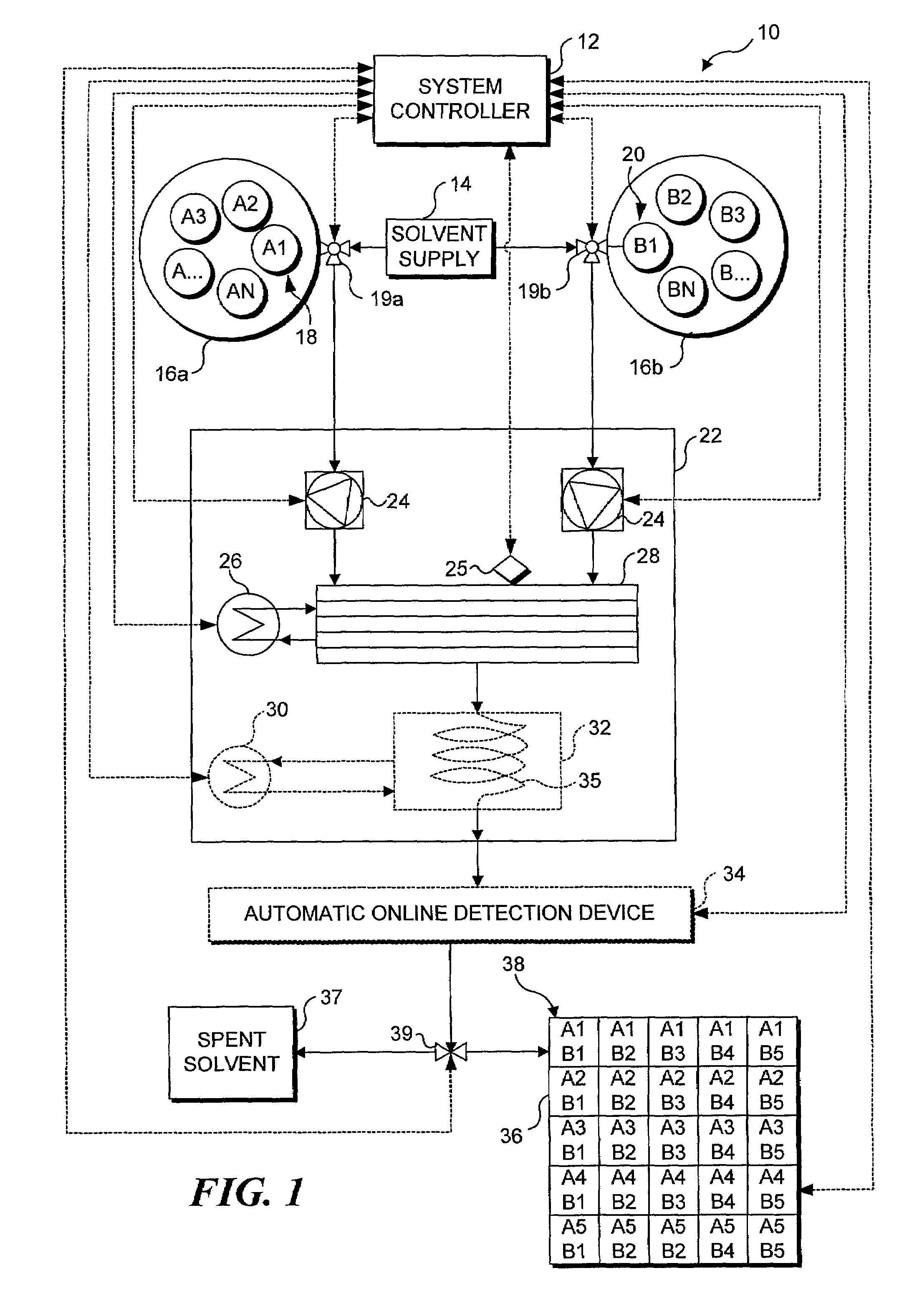Sequential reaction system
a sequential reaction and reaction system technology, applied in the field of sequential reaction systems, can solve the problems of not being useful for most other chemical processing needs, not teaching or suggesting such an automated, sequential reaction system in the prior art, and one of the highest costs of research is associated with skilled labor
- Summary
- Abstract
- Description
- Claims
- Application Information
AI Technical Summary
Benefits of technology
Problems solved by technology
Method used
Image
Examples
Embodiment Construction
[0025]Exemplary Application of the Present Invention
[0026]The automated sequential reactor system of the present invention can be continually operated to produce substance libraries, which are expected to be of great benefit in many phases of research. For instance, it is often useful to study how a particular chemical compound reacts with a group of related, yet different chemical compounds. As a specific example, consider an experimental compound “X” that is being studied as a potential raw material for producing a drug. In this example, it is assumed that “X” must be combined with a chemical compound that is a base (i.e., a compound having a pH over 7.0) in order to produce the drug. It would be desirable to react chemical “X” with a substantial number of different bases, to determine the yield from the reaction with each base. From the results of such tests, the relative costs of each base can be compared, to determine the base that produces the highest yield, at the lowest cost...
PUM
| Property | Measurement | Unit |
|---|---|---|
| Fraction | aaaaa | aaaaa |
| Fraction | aaaaa | aaaaa |
| Fraction | aaaaa | aaaaa |
Abstract
Description
Claims
Application Information
 Login to View More
Login to View More - R&D
- Intellectual Property
- Life Sciences
- Materials
- Tech Scout
- Unparalleled Data Quality
- Higher Quality Content
- 60% Fewer Hallucinations
Browse by: Latest US Patents, China's latest patents, Technical Efficacy Thesaurus, Application Domain, Technology Topic, Popular Technical Reports.
© 2025 PatSnap. All rights reserved.Legal|Privacy policy|Modern Slavery Act Transparency Statement|Sitemap|About US| Contact US: help@patsnap.com



